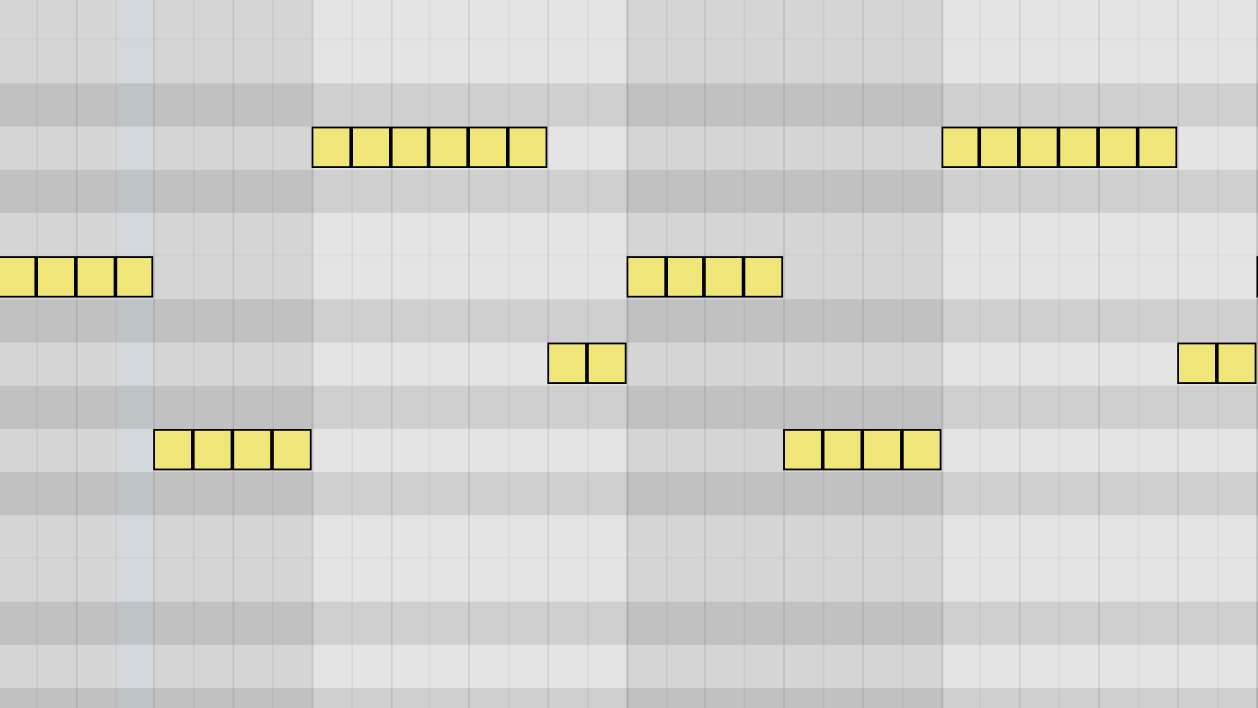These 5 bass patterns can be used in ANY genre of modern music – from house, techno and trance, to trap, drum & bass and even pop music!
Most people think music production is more complicated than it actually is, but when you understand a few key ingredients – and how to combine them properly – you can create original sounding tracks from scratch.
In this blog post, I’m going to share with you the 5 bass patterns that every music producer NEEDS to know…
A strong bass pattern underpins every great track – providing the groove and interplaying with the other elements of the track to get people dancing.
BUT…Before we start!
Essential Bass Note Lengths
Bass patterns can only be explained when you understand the different note lengths we’ll be using.
These are the 6 note lengths we’ll be using in these bass patterns:
There are usually 4 beats to a bar in almost all modern music. The first “1” in these note length fractions refers to a whole bar.
1/1 – this means our bass note is 1 whole bar in length

1/4 – this means our bass note is a quarter of a bar long

1/8 – this means our bass note is an eighth of a bar long

1/16 – this means our bass note is a sixteenth of a bar long

Dotted 1/8 – this note length is an eighth plus half another eighth long

Dotted 1/4 – this note length is a quarter plus half another quarter long

So, now we understand the lengths of the notes we’ll be using, here are the 5 essential bass patterns every producer should know!
5 Essential Bass Patterns
1. Dotted 1/8th
Great for house music, or anything where you want to push the groove forwards.
The dotted 8th creates a syncopated rhythm against the kick drum, and is a staple for dance music of all genres.
Check out how it’s used in “Lean On” By Major Lazer & DJ Snake, and see how it looks in the piano roll editor below.
Example Track:
2. Sustained Bass
Great for progressive house and melodic techno!
A sustained bass line will usually change note every 4 or 8 beats.
Example Track:
3. Straight 1/8th
Great for hands-in-the-air bangers! This works particularly well when coupled with sidechain compression from the kick drum.
Example Track:
4. Straight 1/16th
Great for trance music! Drives the track forwards relentlessly.
Example Track:

5. The Combo
Great for pop music and for spicing up any track, this is where things get really interesting.
You can combine any of the bass pattern building blocks we’ve just looked at into one, unique bass line.
Example Track:
In this example we are using Dotted 1/8ths, Straight 1/8ths and a couple of 1/4 notes.

BONUS
Use two (or more) different bass patterns throughout your track for added interest! This adds dynamics and interest to your track, so you might have a syncopated Dotted 1/8th bass line in your verses, but a straight 1/8th or Sustained Bass in your drop.
Lovely!
Example track:
I hope you’ve found this useful! If you want more information on music theory for dance music production, check out my Music Theory for EDM Producers course here. It’s helped thousands of new producers get their music finished, released and – in many cases – signed to record labels.
If you want to get your kick and bass sounding HUGE together, click here.
Which is your favourite bass pattern? Let me know in the comments below!



